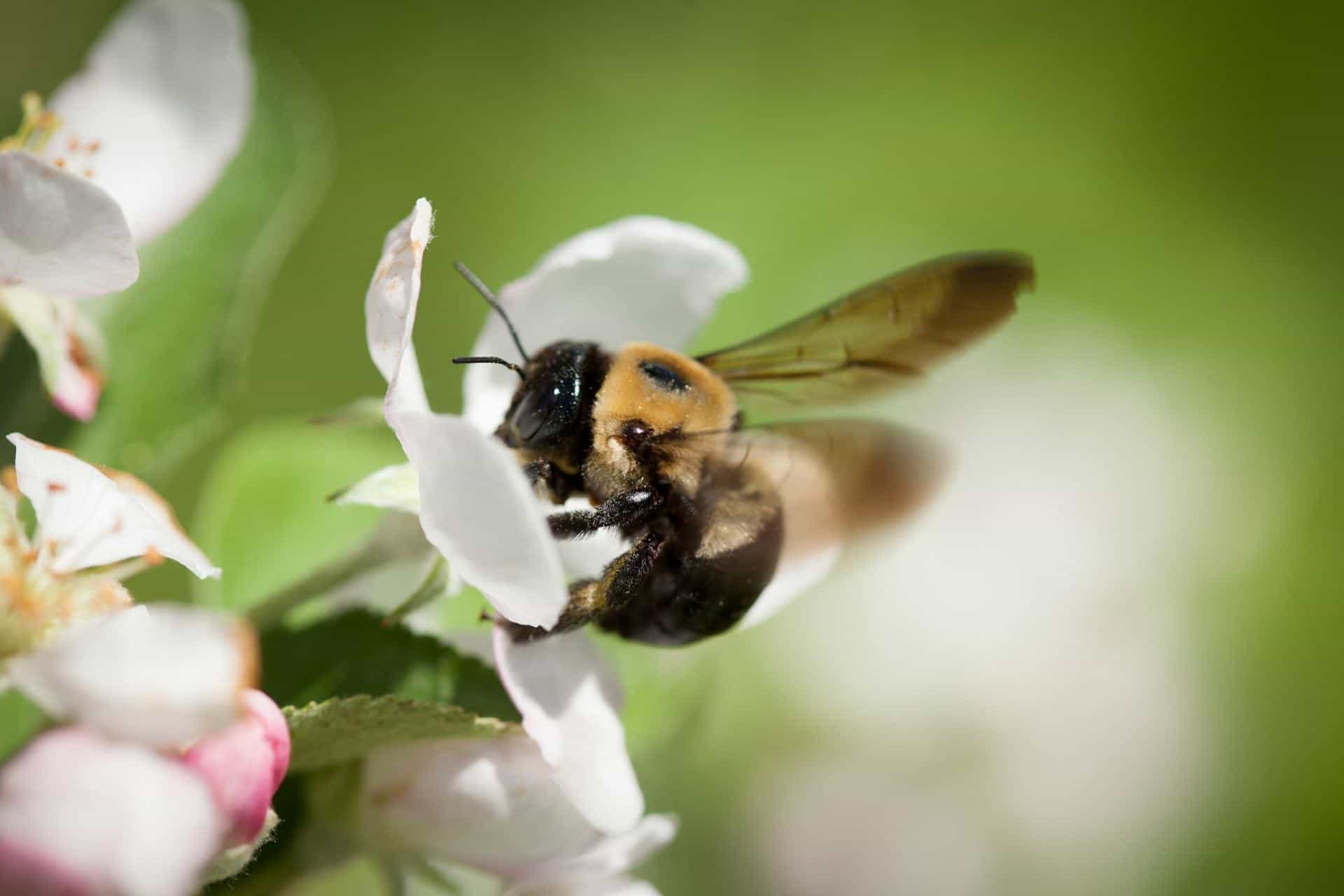Improve Apple Production with Natural Habitats and Bee Diversity

Honey bees pollinate flowering plants at Cornell Orchards. Courtesy of Jason Koski / Cornell University.
New research has found that orchards in natural habitats draw bee diversity which improves apple production.
The Cornell University-led study, published recently in the journal Science, shows that apple orchards surrounded by agricultural lands are visited by a less diverse collection of bee species than orchards surrounded by natural habitats. When fewer, more closely-related species of bees pollinate an orchard, apple production suffers.
“Orchards that have bee communities that are more closely related to each other did worse in terms of their fruit production, and the communities that are more broad across the phylogeny did much better,” Heather Grab, Cornell University Ph.D. ’17, the paper’s first author, said in a press release.
The researchers examined 10 years of data from 27 apple orchards in New York state. They noted the types of landscapes that surround these orchards, measured apple production and surveyed the species of bees that visited each orchard.
Read more about the research on the Cornell Chronicle.

